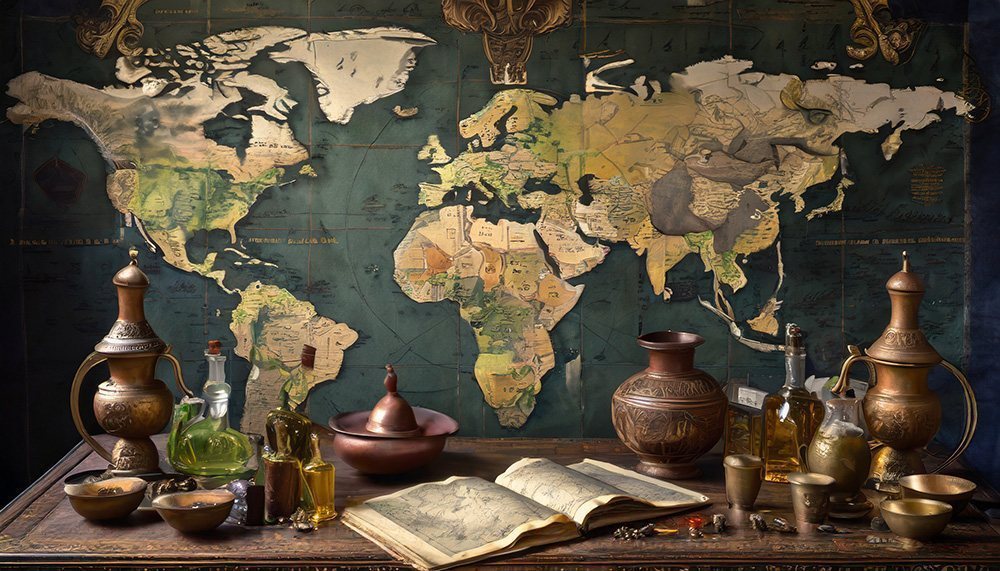
This is a broad overview and by no means exhaustive, but these aromatics have been influential in both the daily life and economic activities of these various cultures.
Hindu Culture
- Sandalwood: Used extensively in religious ceremonies, meditation, and traditional medicine like Ayurveda. It’s a lucrative trade item as well.
- Tulsi (Holy Basil): Besides its religious significance, tulsi is a cornerstone in Ayurvedic medicine.
Islamic Culture
- Agarwood (Oud): Highly prized for its deep, musky aroma, and has religious significance. A very expensive commodity in the Islamic world.
- Rosewater: Used both culinarily and in religious contexts, especially during the holy month of Ramadan.
Chinese Culture
- Ginseng: Though not traditionally aromatic, it’s incredibly significant in traditional Chinese medicine.
- Star Anise: Used in traditional medicine and as a spice in culinary applications.
Native American Culture
- Sage: Used in purification ceremonies, such as smudging.
- Cedar: Used in similar contexts as sage and also holds economic value for woodworking.
African Cultures
- Gum Arabic: Used as a food additive, in crafts, and in traditional medicine, it’s also a significant export.
- Shea Butter: Extracted from the shea tree, used in skin treatments and holds economic value as an export.
European Cultures
- Lavender: Used extensively in perfumery and traditional medicine, with France being a major producer.
- Mint: Widely used in both culinary and medicinal contexts, particularly in teas and remedies.
Japanese Culture
- Camphor: Used in traditional medicine and in ceremonies, it is also a component in various goods.
- Yuzu: Citrus aromatics are important both in cuisine and traditional celebrations.
Latin American Cultures
- Vanilla: Native to Mexico, used widely in food and beverages, and is a major export item.
- Annatto: Used as a dye and in culinary applications, it has both cultural and economic importance.
Polynesian Culture
- Tamanu Oil: Used for skin healing and other medicinal purposes.
- Frangipani (Plumeria): Used in leis and has some medicinal applications.
Back to the Home Fragrance Buyer's Guide
Written by Tony Bierman
Tony Bierman co-founded Candlecopia, a home fragrance company, in 2009. In addition to being a 15-year veteran of the home fragrance industry, Tony is also an author, an award-winning software developer, and an amateur photographer. In his spare time, you’ll find him hiking the woods of Roanoke Creek, with his camera and his dogs.

[…] Fragrances by World Culture […]